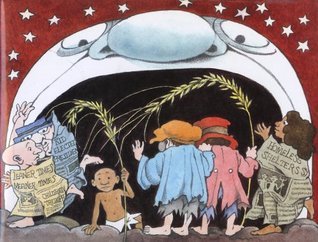What do you think?
Rate this book


We are all in the dumps
For diamonds are trumps
The kittens are gone to St. Paul's!
The baby is bit
The moon's in a fit
And the houses are built
Without walls
Jack and Guy
Went out in the Rye
And they found a little boy
With one black eye
Come says Jack let's knock
Him on the head
No says Guy
Let's buy him some bread
You buy one loaf
And I'll buy two
And we'll bring him up
As other folk do
Two traditional rhymes from Mother Goose, Ingeniously joined and interpreted by Maurice Sendak.
56 pages, Hardcover
First published January 1, 1993



